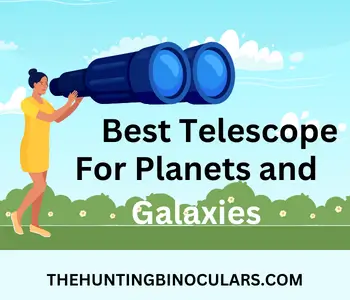
Telescopes are designed with the needs of different viewing aims and astronomy applications in mind. If you are a night sky lover and looking for the best telescope for viewing planets and galaxies, here is a comprehensive review guide for you. For viewing galaxies and planets you need a telescope with powerful optics.
These telescopes can produce detailed, clear, sharp, and bright images of your favorite celestial objects. In this review, we all take a closer look at the specs and performance features of the telescopes designed for viewing galaxies and planets. Also, I’ll share a buying guide, in the end, to help you make a well-informed decision.
COMPARISON TABLE TO CHECK THE PRICE
| Image | Product | Details | Price |
|---|---|---|---|
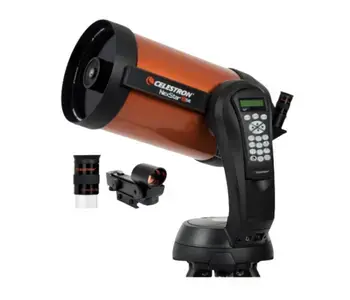 |
Celestron-NexStar | Brand: Celestron Weight: 10.88 Kilograms |
Check Price |
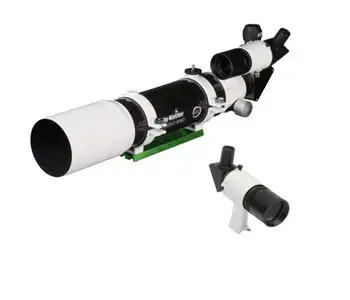 |
Sky-Watcher | Brand: Sky Watcher Weight: 7.3 Pounds |
Check Price |
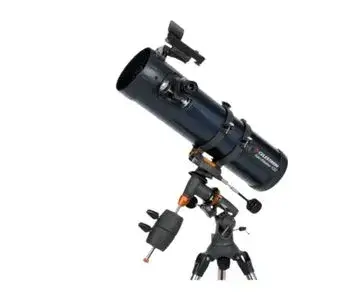 |
Celestron-AstroMaster | Brand: Celestron Weight: 26.5 Pounds |
Check Price |
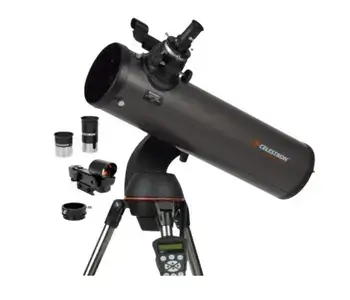 |
Celestron-NexStar | Brand: Celestron Weight: 11.4 Pounds |
Check Price |
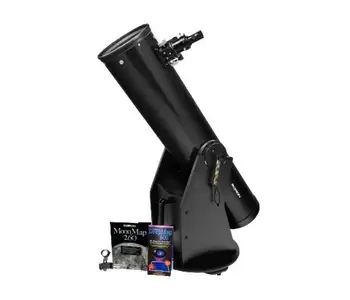 |
Orion 8945 SkyQuest | Brand: Orion Weight: 41 lbs |
Check Price |
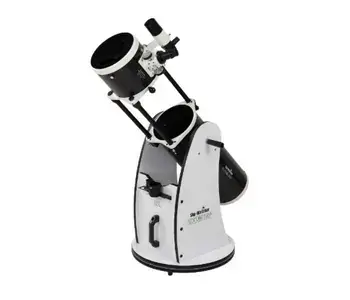 |
Sky-Watcher Flextube | Brand: Sky Watcher Weight: 67.2 Pounds |
Check Price |
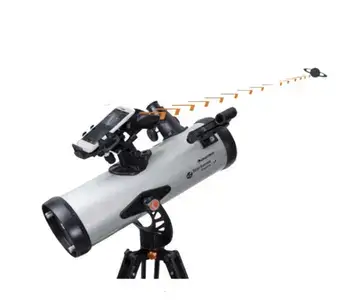 |
Celestron–StarSense | Brand: Celestron Weight: 4700 Grams |
Check Price |
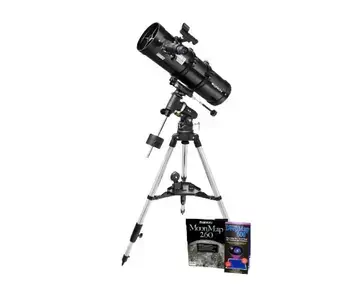 |
Orion 09007 | Brand: Orion Weight: 24.2 Pounds |
Check Price |
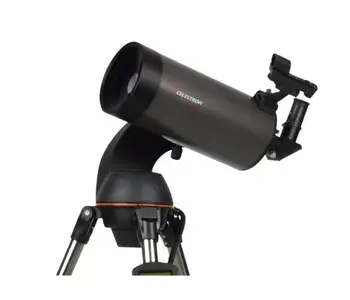 |
Celestron-NexStar 127SLT | Brand: Celestron Weight: 20 Pounds. |
Check Price |
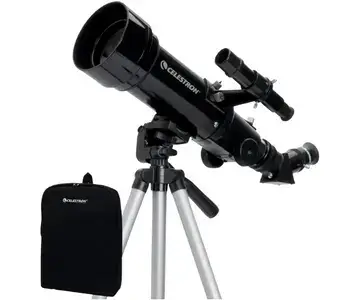 |
Celestron – 70mm | Brand: Celestron Weight: 3.3 Pounds |
Check Price |
Table of Contents
- Best Telescopes For Viewing Planets and Galaxies Our Top 10 Products
- 1. Celestron-NexStar 8SE Telescope-Best Telescope For Beginners
- 2. Sky-Watcher EvoStar 80 APO Doublet Refractor-Best For beautiful views
- 3. Celestron-AstroMaster 130EQ Newtonian Telescope-Best For Sharp Image
- 4. Celestron-NexStar 130SLT Computerized Telescope-Computerized Telescope
- 5. Orion 8945 SkyQuest XT8 Classic Dobsonian Telescope-Affordable Telescope
- 6. Sky-Watcher Flextube 200 Dobsonian Telescope-High Quality
- 7. Celestron–StarSense Explorer LT 114AZ Telescope-Higher Power Lens
- 8. Orion 09007 SpaceProbe 130ST Equatorial Reflector Telescope-Best For views of the planets
- 9. Celestron-NexStar 127SLT Computerized Telescope-Compact and Portable
- 10. Celestron-70mm Travel Scope-Portable Refractor Telescope-high-quality eyepieces
- Buying Guide | Telescopes For Viewing Planets and Galaxies
- FAQs
Best Telescopes For Viewing Planets and Galaxies Our Top 10 Products
1. Celestron-NexStar 8SE Telescope-Best Telescope For Beginners
The market is flooded with different types of telescopes and knowing which one is best fitted for planet viewing is a challenge. I was struggling with the same confusion in mind and it took me around 2 months to complete the market research before buying a telescope for viewing planets and galaxies. Celestron NexStar 8SE is one of the best-selling telescopes available in the market and it was reviewed as a perfect telescope for viewing planets and galaxies.
Though it was a little more explosive than what I wanted to spend, I purchased it for its premium-grade optics and unrivaled performance. The features that make this telescope best for viewing planets and dim deep sky objects are the optics. Its 8-inch aperture sinks a big heap of light for max resolving power resulting in incredibly bright and sharp images. It features Schmidt-Cassegrian with upgraded technology. The chromatic aberration is minimum and the optics feel compact and handy for this size.
I as a beginner loved the fully-automated goto mount of the telescope. With more than 40,000 objects in the database, it makes the location and tracking of celestial objects super easy. Also, the setup and assembly were super easy and it took me half an hour to bring everything down.
Alignment can be a little hard especially if you are new to astrophotography or night sky gazing. Its unique SkyAlign technology makes the alignment super quick, easy, and precise. The motor is also smooth and accurate which ensures that everything remains intact and focused resulting in well-detailed and sharp images. Also, it’s a great option for astrophotography. It breaks down into small components for easy and compact storage.
2-year US-based warranty, unlimited support, and free download of one of the top-rated astronomy software Starry Night Special Edition are some other perks that you will get with this telescope. This is one of the most dependable telescopes I’ve used so far and there’s nothing much to complain about except for its hefty price tag. Also, it needs 8 AA batteries and battery life isn’t as impressive as other performance features of this telescope.
Celestron NexStar 8SE is the best-fitted telescope for planetary vision I’ve ever used. In addition to planets, you can use it for viewing galaxies, dark sky objects, and astrophotography as it is compatible with a wide range of accessories. Its ability to form clear and ultra-bright images and effortless alignment make it the best telescope for viewing planets and galaxies.
2. Sky-Watcher EvoStar 80 APO Doublet Refractor-Best For beautiful views
If you don’t have enough money to buy a premium-grade telescope like the Celestron NexStar 8SE consider the Sky-Watcher EvoStar 80 APO. It is a reflective telescope with glass lenses at its front. The professional-grade optical quality makes it a great option for viewing planets and galaxies.
It’s a doublet telescope which means it uses two EvoStar glass lenses at the front. For minimum chromatic aberration and unmatched color correction, the optical part features Metallic High Transmission Coatings. The part of the telescope that impressed me most is its Crayford-style focuser. It uses a 10:1 dual-speed focuser at the back.
The focus knob feels smooth yet grippy and offers unique kinetic feedback at every twist. It uses a 90 mm aperture that is good but not overly potent. It sinks enough light to help you see bright and well-detailed images of planets, moon, galaxies, nebula, and many deep sky objects. The quality of the tube used in optics is impressive for this price which results in high-contrast shots.
A layperson who can’t differentiate between a good and premium-grade contrast and image quality will love this telescope at this price point. The telescope is built with the needs of novices in mind but unfortunately, it doesn’t come with a mount or base. Pros can easily manage this flaw but for novices, it can be a real hassle to pair it with a compatible and perfect mount or base.
If you are looking for a competitively priced telescope for viewing planets and galaxies with decent image quality, high details, and perfect color contrast, SkyWatcher EvoStar 80 APO is the best option you can have. I loved the optical setup of the telescope and it is a great option for night sky lovers.
3. Celestron-AstroMaster 130EQ Newtonian Telescope-Best For Sharp Image
Next on the list is a budget-friendly option. This is a powerful and the best telescope for viewing planets and galaxies for beginners who love to explore and view planets and galaxies. What sets it apart from all the telescopes in the price range is its 130 mm apertures. It gathers a big stack of light. I was completely blown away by the color contrast and brightness of the images produced by this scope.
This telescope is not devised for high-end astrophotography. Also, you can’t expect it to perform long exposure imaging. It is a simple reflector telescope that offers a decent experience of observing, stargazing, and imaging. It’s a reflector telescope that comes with a 120 EQ reflector, multi-coated glass lenses, eyepieces, and one StarPointer red dot finderscope.
Since it does not include any Fancy GoTo mounts or complicated electronics I found it pretty easy to set up. The OTA setup is simple and the 5-inch aperture grasps a good amount of light and offers decent resolving power. It forms very high-quality images for popular targets like the moon and planets. I loved the detail and sharpness it offered for the moon and bright planets like Venus and Uranus.
Polar alignment is an important phenomenon for a stellar and stable viewing experience. The mount doesn’t come with a polar scope so initially, I found the alignment process a little confusing and more challenging. For perfect alignment, a manual operation is needed. The guide is simple and intuitive and I was able to master it within 4 to 5 days. The slow-motion knob for post-alignment fine-tuning works great and it seemed pretty easy to use.
Celestron- AeroMaster 130EQ uses affordable yet good quality optics that offer to stargaze, planet viewing, and galaxy viewing experiences for night sky lovers. Multi-coated optics, oversized aperture, and a wide range of accessories make it the perfect telescope for planet viewings.
4. Celestron-NexStar 130SLT Computerized Telescope-Computerized Telescope
Celestron- Nexstar 120 SLT computerized telescope is one of the most affordable telescopes that is equipped with the most updated features like SkyAlign, a versatile astronomy database, and Starry Night Software. It was my very first telescope and no one in my family had astronomy experience prior to this purchase.
The telescope is a powerful combo of technology and quality making it a real treat for beginners, It features 130 mm apertures and the light grasp is more than impressive. Its resolving power is impressive resulting in great detail and sharp image formation. Like all Celestron- telescopes in the Nexstar series it features premium-grade Newtonian reflector optics.
The chromatic aberration is pretty low and SkyAlign technology makes the alignment super quick and precise even for beginners. It comes with two eyepieces. The quality of eyepieces is okay for beginners but I outgrew them very soon. After 4 months I paired it up with Celestron X-Cel eyepieces. The telescope uses a database containing data of 40,000+ celestial objects making it easy to track your favorite target objects like galaxies and planets.
The optics are powerful enough to separate Saturn and the rings, the moon’s clusters, and Jupiter’s cloud bands. Also, it offers a fairly clear viewing experience for faint deep sky objects. The instructions to put it on target are clear, precise, and short. As a beginner, it got me up and running immediately. However, the mount that comes with the telescope is too small for the tube size.
Celestron- NexStar 130 SLT is equipped with some premium-grade Celestron technologies and software programs making it the best telescope for viewing planets and galaxies. It is not made for astrophotography or deep sky objects but offers a great experience for the moon, planets, and galaxies for night sky lovers.
5. Orion 8945 SkyQuest XT8 Classic Dobsonian Telescope-Affordable Telescope
Orion SkyQuest 8XT with high-quality reflector-based optics is the next on the list. This is one of the very few options using Newtonian reflector options at this price point. The telescope is great for viewing the moon and planets but the thing that made me fall in love with it was its ability to spot deep-sky objects.
So let’s begin the discussion with its optics. It uses Newtonian reflector optics that feature a parabolic mirror instead of a spherical mirror. The mirror is made of Pyrex or borosilicate glass. These features ensure that the optics won’t suffer spherical or chromatic aberration. It resulted in well-focused, bright, and stable image formation.
Additionally, it features a 203 mm aperture that offers maximum light grasp and unrivaled resolving power in this class of telescopes. The telescopes offer higher details for the moon and planets except for Uranus and Neptune. The images of these planets appear to be a little dim and streaky. Also, I was able to spot galaxies, nebulas, and stars along with some dimmer deep space objects with a fair amount of detail and quality.
The setup is quite easy and the telescope comes with all the accessories that you need. The red dot finder scope is of average quality but it worked out really well and I’ve had no problem with it so far. However, it’s a heavy telescope and comes with a very basic mount featuring spring tensioning. Telescope tips over easily if the weight isn’t perfectly distributed from top to bottom. Also, its optics are exposed and need regular cleaning and maintenance.
Orion SkyQuest XT8 has been a part of my astronomy setup for around 6 months and it’s been very impressive so far. This is probably the only telescope in this class range that lets you spot the faint deep sky object along with providing ultra-bright and sharp images of the moon and planets making it the best telescope for viewing planets and galaxies.
6. Sky-Watcher Flextube 200 Dobsonian Telescope-High Quality
Although Celestron telescopes under 1000 offer unrivaled optical quality, their mounting structures are pretty disappointing. Sky-watcher FlexTube 200 is one of the handiest telescopes that is equipped with an oversized aperture, a steady, easy-to-use mount, and quality optics.
I loved this telescope for its handy collapsible tube design. It comes with an easy-to-use mount and the tube features a collapsible design. It makes the collimation super easy and enhances the portability. Its patented proprietary tensioning handles allow you to move the whole structure without being concerned about perfect balance and control.
It uses 94% fully multi-coated reflective mirrors. The optics came pre-collimated and I was quite surprised since there was no spherical aberration or stagnation. The mirrors are made up of Pyrex that cools down very quickly, resulting in perfect long-exposure imaging results.
Moreover, it comes with a Crayford-Style focuser with a power adapter, two premium grade eyepieces, and an 8×50 right angle finder scope. All the parts work really well and offer a good experience for beginners and pros alike. It is from ultra-bright images of the moon and planets. Also, I loved the detailed and stable galaxy view offered by the f6 mirror. It uses an open tube so the contrast is a little limited. Also, you cannot use it for solar observation even with a filter.
SkyWatcher Flextube 200 with premium optics, versatile tube structure, and very dependable mount is undoubtedly the best telescope for viewing planets and galaxies. With a large aperture and premium-grade accessories, a scope is a perfect option for night gazing and basic astrophotography applications.
7. Celestron–StarSense Explorer LT 114AZ Telescope-Higher Power Lens
Celestron StarSense Exposure is a beginner-friendly telescope designed for basic night gazing and planet-viewing experiences. It is a sky recognition app-enabled telescope that helps you learn about sky features, stars, and galaxies. You can calculate the position of the stars and planets in real-time using your smartphone.
It is an entry-level telescope that is equipped with a basic optic structure including two Barlow lenses, Kellner eyepieces, and a 114mm aperture. The aperture isn’t very large but sinks enough light to produce a bright and sharp image in good viewing conditions. The biggest issue with this telescope is that it is prone to chromatic aberration when you want to see bright celestial objects.
The magnification for the moon and planets is impressive considering its affordable price. Even if you don’t have any astronomy experience you will be able to see your target objects in the night sky. StarSense sky recognition technology will get you a guided tour of the night sky.
Its red dot finder is smooth but not very precise. It came with a manual altazimuth mount. The mount is manual but features ultra-smooth bearings, slow-motion control, and a dual-axis structure. It enables you to precisely follow the on-screen instructions provided by the StarSense app.
If you searching for the best telescope for viewing planets and galaxies for beginners then, Celestron StarSense Explorer LT 114 AZ is designed for you, although you don’t know anything about night sky gazing before. This is a perfect teaching tool for youngsters and I loved it for its handy structure. Its StarSense app navigation makes it the best telescope for viewing planets and galaxies.
8. Orion 09007 SpaceProbe 130ST Equatorial Reflector Telescope-Best For views of the planets
If you are looking for a telescope for long-exposure astrophotography or want to track an object in the night sky without frequent adjustments, consider Orion SpaceProbe 120 ST. The telescope comes packed with quality optics and an equilateral mount to give you the best experience for long-exposure imaging at a very affordable price point.
It features 130 mm apertures that grasp a big stack of light making it easier to spot your favorite planetary object and galaxies. The focal length of the optics is 1/5 and it gives a wide range field of view. It is an ultra-portable telescope and feels very compact for this size of optics. The fully assembled telescope weighs only 29 lbs and I found it pretty easy to move around.
It has a wider field of view and low magnification and lets you spot big objects in the deep sky like the Andromeda galaxy, open star clusters, and many other galaxies. The sturdy equatorial mount makes the slow-motion tuning super easy. It allows you to focus the telescope on sky objects that appear to be moving. In addition to perfect tracking, I loved the image quality formed by this telescope. It comes with two 10mm Plossl eyepieces that are far better than Klenner optics in terms of quality and performance.
Though it is not made for high-end astrophotography it is a lot of fun capturing clear and bright pictures of the moon, planets, and other bright objects in the sky. It comes with a smartphone camera adapter allowing you to capture your favorite object in the night sky. The telescopes come with some cheap plastic parts and an inconvenient plastic focuser. Also, the assembly and setup are a little confusing for beginners.
If you are looking for an ultra-portable telescope for viewing planets, galaxies, and other bright deep-sky objects, consider Orion SpaceProbe 130ST. It is a great option for night gazing as its steady equatorial mount allows you to track the moving object in the night sky.
9. Celestron-NexStar 127SLT Computerized Telescope-Compact and Portable
Celestron NexStra with a database of more than 40,000 objects and SkyX Planetarium software is a very well-designed telescope for planetary and galaxy viewing. The aperture size is not very large but can capture enough light to form bright images of the planet, moon, and many galaxies. It comes with two Plossl eyepieces, an accessory tray, a red dot finder, and software support. It has everything that a beginner or astronomy enthusiast needs for a smooth and stable night gazing experience.
The StarPointer finderscope is very convenient and precise. Also, it comes with a quick-release fork arm mount. The mount is handy but not as dependable as the Palsbasin mount. It needs a lot of balance and control while moving the tube and took me three to four weeks to get used to it.
The Optical Tube assembly is solid and setup is pretty easy. All the instructions provided are pretty clear. However, the tripod included in the package isn’t solid enough to bear the tube weight. I recommend you use this telescope with a sturdy tripod to avoid tipping over.
Since it is a computerized telescope it accurately pinpoints your target object and tracks them automatically. The quality of the images is good and sharp. The chromatic aberration may hinder your experience when you want to focus on some bright object like Neptune. However, for most planets, the moon, and galaxies, its results are fairly good. You can also connect it to a smartphone or digital camera for astrophotography.
Celestron NexStar 126 SLT telescope lets you view the planets, galaxies, and your favorite deep-sky objects without breaking the bank. With solid software support and a dependable pack of accessories, this is the best telescope for viewing planets and galaxies.
10. Celestron-70mm Travel Scope-Portable Refractor Telescope-high-quality eyepieces
The final option on the list is Celestron 90 mm travel space telescope. It is the only option on the list that comes under $100. It is a basic telescope that lets you view the moon, planets, and some big and bright objects in the night sky with decent clarity and good brightness. It comes with a 90 mm objective lens that isn’t as powerful and bright as large aperture optics.
Its fully coated glass offers decent magnification and resolving power giving you a sharp and closer look at night sky objects. It is a compatible structure that comes with a travel backpack and is a perfect option for camping and outdoor adventures. It comes with two high-quality eye-pieces and a star diagonal for crisp image formation.
You can’t expect it to perform the same as its expensive counterparts using reflective optics. It is basically designed for terrestrial applications. However, it performs really well for the beginner who is interested in night sky gazing. Set up and assembly is simple and it won’t take you more than 10 minutes to bring everything down.
You can adjust the tripod leg position and height for easy focus and alignment. The best part of this telescope is that it is compatible with starry night software. You can download its latest edition software to learn about celestial objects, night sky mysteries, and more.
Celestron- 70 mm travel scope is a simple beginner-friendly scope that you can buy for your kids and anyone in your family who wants to learn about night sky objects. The scope is highly affordable and setup is very easy making it perfect for novices.
Buying Guide | Telescopes For Viewing Planets and Galaxies
Must keep this in mind when you purchase a telescope.
Aperture And Focal Rating
To see galaxies the best aperture is the biggest you can get. The larger aperture size means more light gathering and more information, better contrast, and realistic colors in the formed image. However, for viewing planets, light gathering is not very important since they are the brightest in the sky. To get a perfectly focused image of the planet you want to focus you need a smaller field of view. It means a smaller aperture and higher focal length will work better.
A smaller aperture and compact field of view mean a longer focal length. Focal length is the distance that the light travels from the lens to the mirrors/eyepiece. For galaxies, you need a wider field of view and a big aperture. But for planets you can compromise on aperture size and a compact field of view will help you track and focus the planets more precisely.
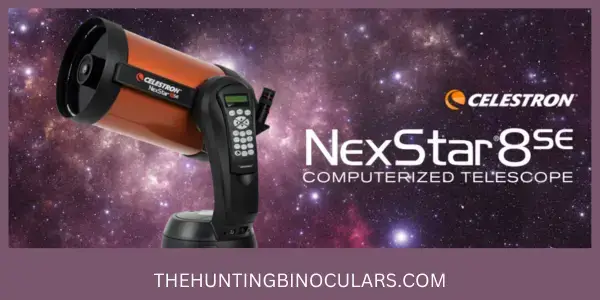
Telescope Magnification
To view the night sky and objects like galaxies and planets, you need to work with different types of magnification power in different situations. The good news is that you can adjust the magnification of the telescope by adding different accessories. The magnification of the telescope is calculated by dividing the scope’s focal length by the eyepiece’s focal length. For instance, if you use a 25mm eyepiece with a 600mm scope you will get a magnification of 25 x 24 or simple 25x magnification.
There is also a maximum magnification limit for all scopes which can restrict you from using an eyepiece of a particular focal length. Most telescopes allow you up to 3x magnification for their aperture. The magnification of the telescope you need also depends upon the object and air quality. For instance, if air turbulence is high and the object is large and bright a higher magnification will lead to image distortion.
Hardware Quality
The quality of mounts and optics is another key feature you need to consider. The quality of lenses and eyepieces affects the image formation ability of the scope. If you are interested in high-end applications like astrophotography you may need to spend a few more hundred for premium-grade optics.
Viewing stars, planets, and galaxies need optics with minimum chromatic aberration and perfect collimation. Motor-based GoTo mounts come with a higher price tag but make the focusing and alignment super easy. Ease of handling and ease of use largely depends upon the quality of the mount and therefore it should be among your top concerns.
FAQs
Wrapping Up
As discussed earliest telescopes are designed with different viewing aims in mind and price varies depending upon the type of optics and technologies used. You can find a telescope for viewing galaxies and planets between $700-$100. If you are a beginner and looking for a budget option you can find multiple options between $300 to $500. Here are my top three picks from the list:
- Celestron-NexStar 8SE Telescope for ultra-bright and sharp image formation, Starry Night software support, and easy setup.
- Celestron–StarSense Explorer LT 114AZ Telescope for an affordable price, StarSense App navigation, and ease of setup.
- Orion 8945 SkyQuest XT8 Classic Dobsonian Telescope for the ability to form sharp and bright images, oversized apertures, and minimum spherical/chromatic aberration.
I’m hopeful that this review and guide will help you find the best telescope for viewing planets and galaxies. If you are new and want to study sky objects, I recommend you buy Celestron computerized telescopes as they are beginner friendly and feature a solid database for ease of learning.
Related Searches!
